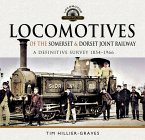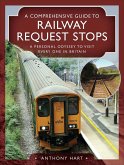The British Railways 'Pilot Scheme' orders of 1955 included ten BTH and ten NBL Type 1 locomotives, these being introduced during 1957-61 for use in East London, and on the Great Eastern and London, Tilbury & Southend lines. The BTH fleet subsequently expanded to forty-four, as a consequence of their light axle-loading and the availability of spare manufacturing capacity which BR chose to exploit in their quest to eliminate steam traction. Further construction of these two classes ceased after the fifty-four units, with preference being given to the highly reliable English Electric product which by mid-1962 had proliferated to 128 examples. The NBL fleet survived until 1968, being withdrawn after ten years of indifferent performance. The BTH locomotives followed by 1971, although four lingered on as carriage pre-heating units. Dramatic reductions in goods traffic during the 1960s/70s particularly impacted local trip and transfer freight duties, the 'bread and butter' work for the Type 1s, and it was inevitable that the less successful classes were retired from traffic first. This book looks at the short history of these two classes, making extensive use of archive sources, combined with the primary observations of numerous enthusiasts. Previously unpublished information, covering the introduction, appearance design and performance issues of the locomotives, form a central focus, and, allocations, works histories, storage and disposals, liveries and detail differences are covered in the same level of detail as previous volumes in the 'Locomotive Portfolio" series.
Dieser Download kann aus rechtlichen Gründen nur mit Rechnungsadresse in A, B, BG, CY, CZ, D, DK, EW, E, FIN, F, GR, HR, H, IRL, I, LT, L, LR, M, NL, PL, P, R, S, SLO, SK ausgeliefert werden.









